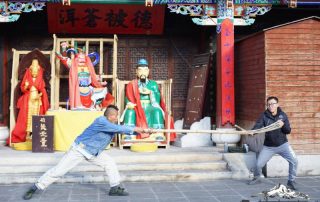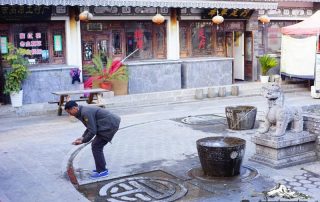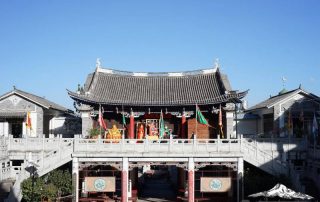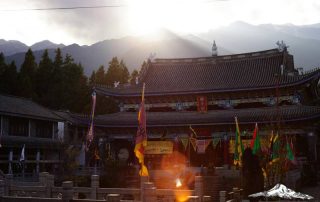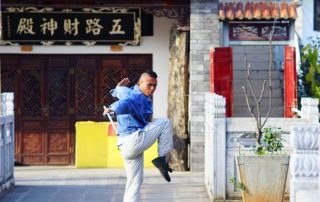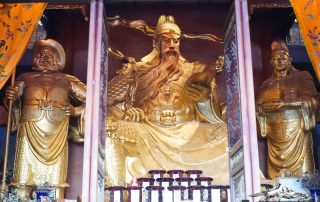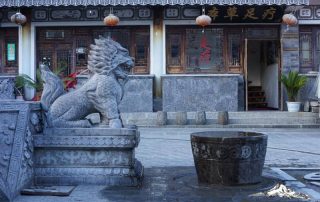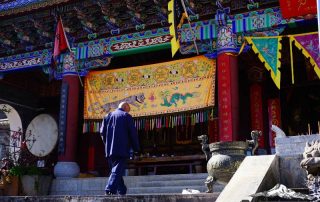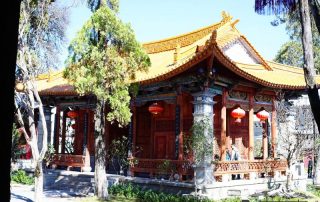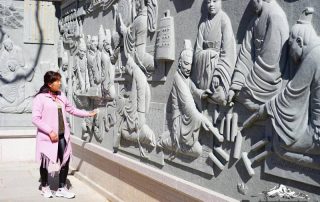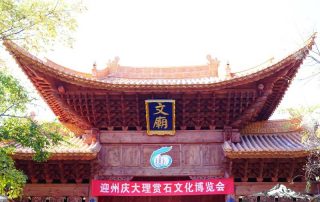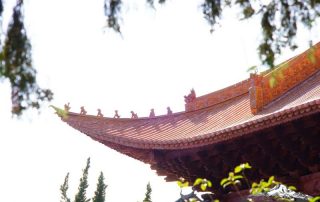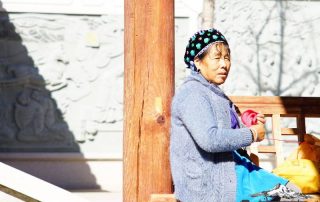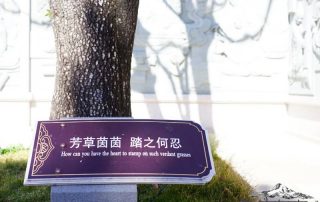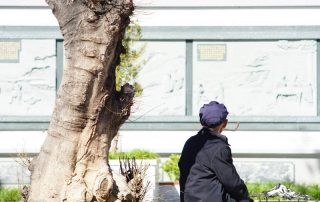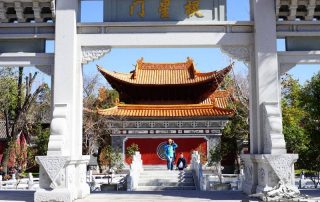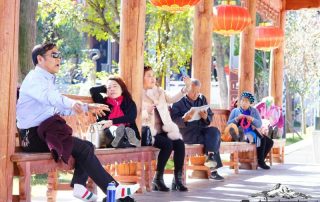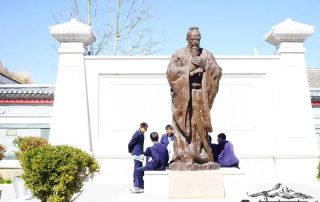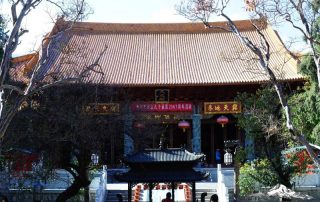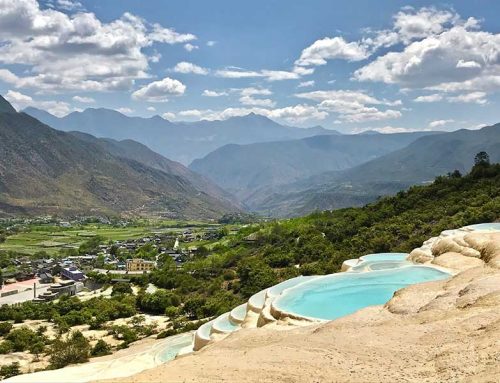Temples in the Old Town of Dali
If the question arises where to find a quiet haven within this already quite calm city of Dali, two temples inside the Old Town should be taken into consideration. One is called the Wu Temple (武庙) and the other one the Dali Confucian Temple (大理文庙), both in the western part of the Old Town.
The Wu Temple, also Guan Di Temple (关帝庙) in memory of a general during the Time of Three Kingdoms (208-280 n. Chr.), was built over 600 years ago whilst the reign of the Ming Dynasty founder Hong Wu (1328-1398) and got destroyed in the Cultural Revolution.
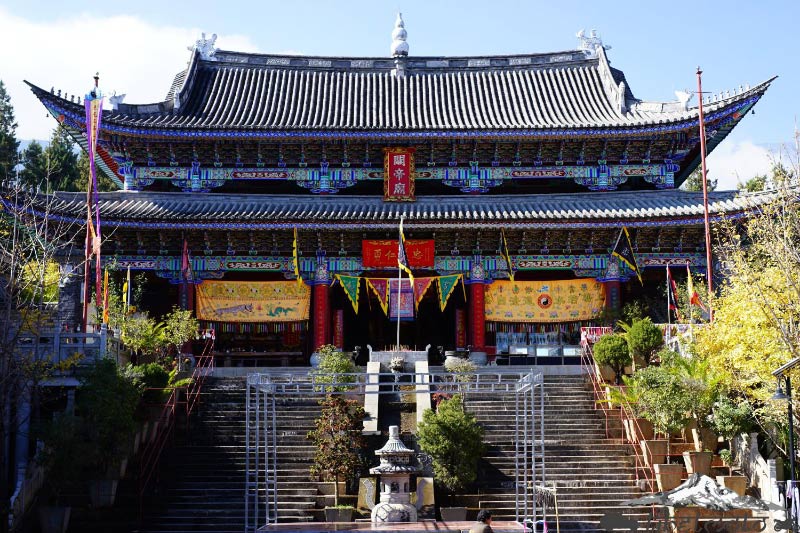
The Main Hall as well as remains of the outer wall and the courtyard were able to be reconstructed, to acquire the old splendour of this temple in Dali. A peculiarity of this temple is the integration of religious elements of the Bai into a typical daoistic structure. Among the prominently placed Guan Di Statue many statues of the Bai join the group. The info plague at the entrance to the temple even claims this would be the only temple worldwide to have integrated local religious elements.
The entrance to the complex brings you past two picturesque courtyards, which especially during the day are being occupied by commercial stalls. The third courtyard then unveils the real power of this historically and spiritually charged temple. The way to the main hall is flanked by trees and a fountain at the upper end of the stairs provides a daoistic flow. The atmosphere is underlined by calm traditional Chinese music coming out of hidden speakers. In the morning some gather for Tai Chi and often times master and disciple are devoting themselves to the exercise of Kung Fu on the upper gallery. Hectic here is out of place. Also the residents in their shops know to acknowledge and preserve the beauty of silence at this place.
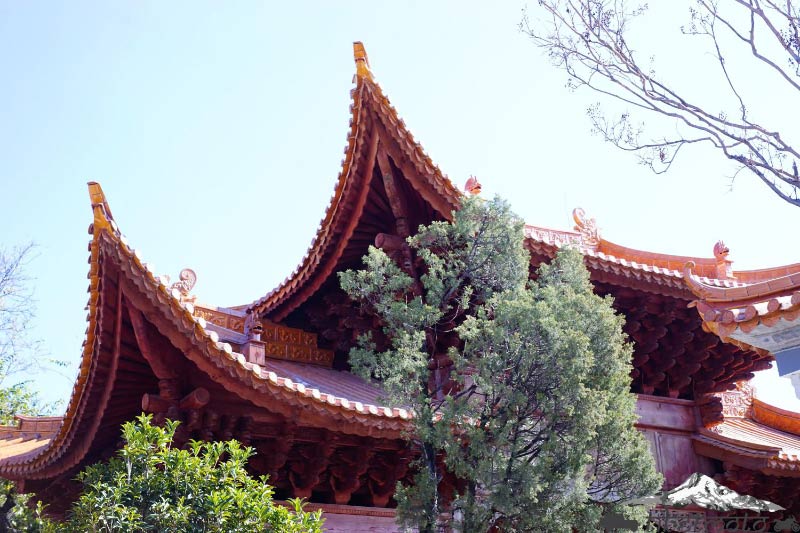
An other temple in Dali is the already mentioned Confucian Temple, or Dali Cultural Center (大理文化馆). This complex was created during the Yuan Dynasty (1271-1368) and at the present of emperor Tong Zhi (1856-1875) it got reconstructed.
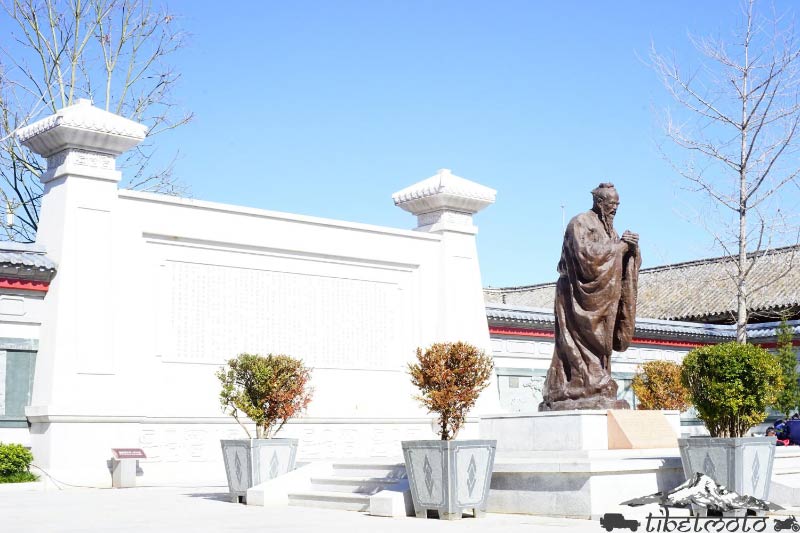
A restoration project runned by the administration of the city of Dali startet in 2014. Only just in 2016 after finishing the restoration work this temple in Dali was opened to the public. The area contains in total 12,217m2 with a total of 8,600m2 build on; the rest are open spaces, smaller green spaces and paths. The main Hall of the temple (大成殿) plus the most part of the architecture are made out of wood. This circumstance in combination with numerous use of marble and marvelous flora, lends this place and exquisite cover.
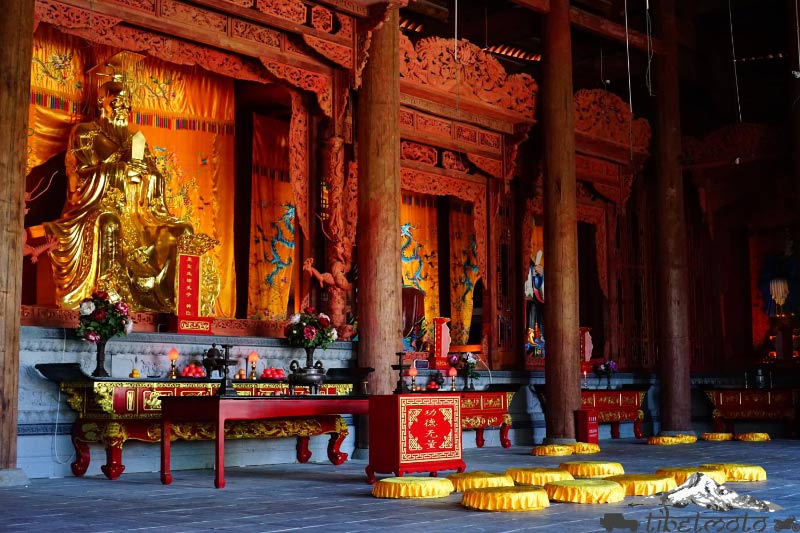
No matter of either concentrating on the history of Confucius at the marble relief plaques or taking a break at the manifold dwelling possibilities, the beauty of this place is a beauty of silence, of respect and wisdom. As a place of exchange and introspection, of culture and nature, this temple in Dali is a special one for local residents and tourists.

